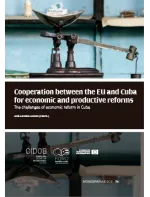Introduction: Cuba at the crossroads

Since the start of the 1990s and the socialist bloc’s collapse, Cuba has striven to redefine the country’s economic model and reset its system of external relations. Numerous changes have been made over those three decades, but no satisfactory pathway has been found to guide the economy’s future progress or to correct its recurring tendency towards macroeconomic imbalances, and no precise vision of the destination has been created. The most substantial reforms remain pending, while many of those carried out have had limited effect due to their fragmentary or incomplete design.
Of course, there are many reasons why this is no easy task. The country’s changing surroundings, its peculiar place on the geostrategic map and the rigidities of its inherited economic and political model all partly explain why advances are soon followed by setbacks, experiments are abandoned and frequent changes of course go unexplained. But these difficulties aside the entire process has been conditioned by a lack of clarity (or consistency) about the sequence of the reforms and a calculated imprecision around the destination scenario towards which are the changes are meant to lead. In each period of time, this imprecision has its own nuances.